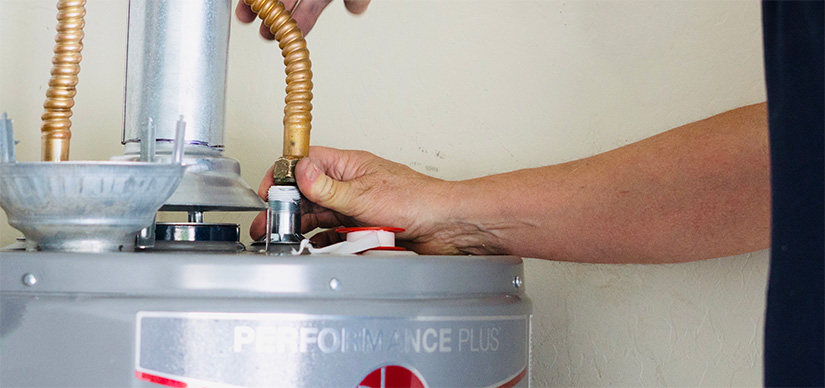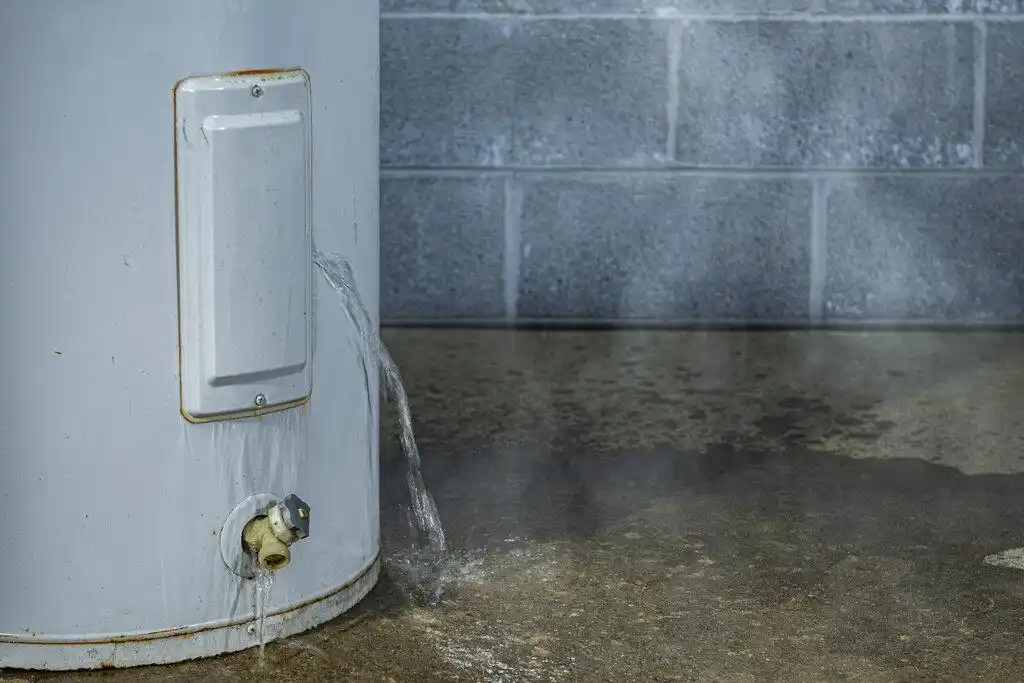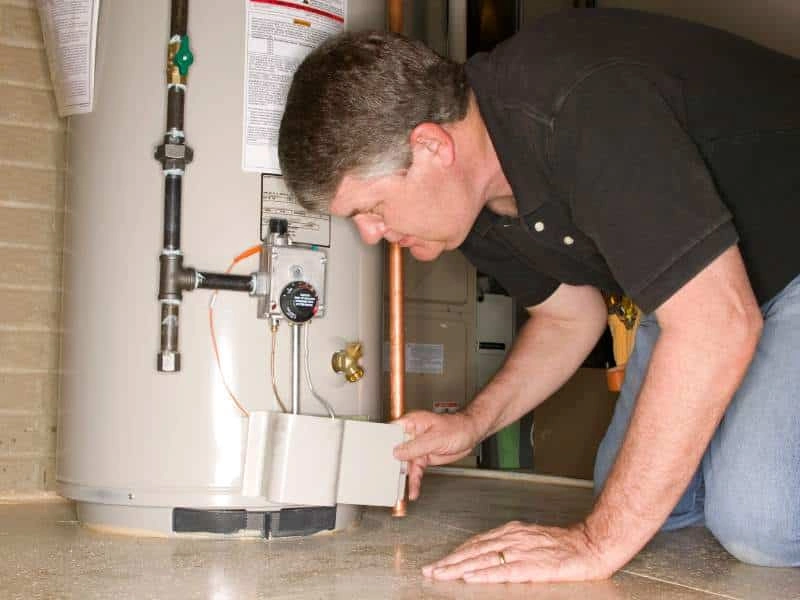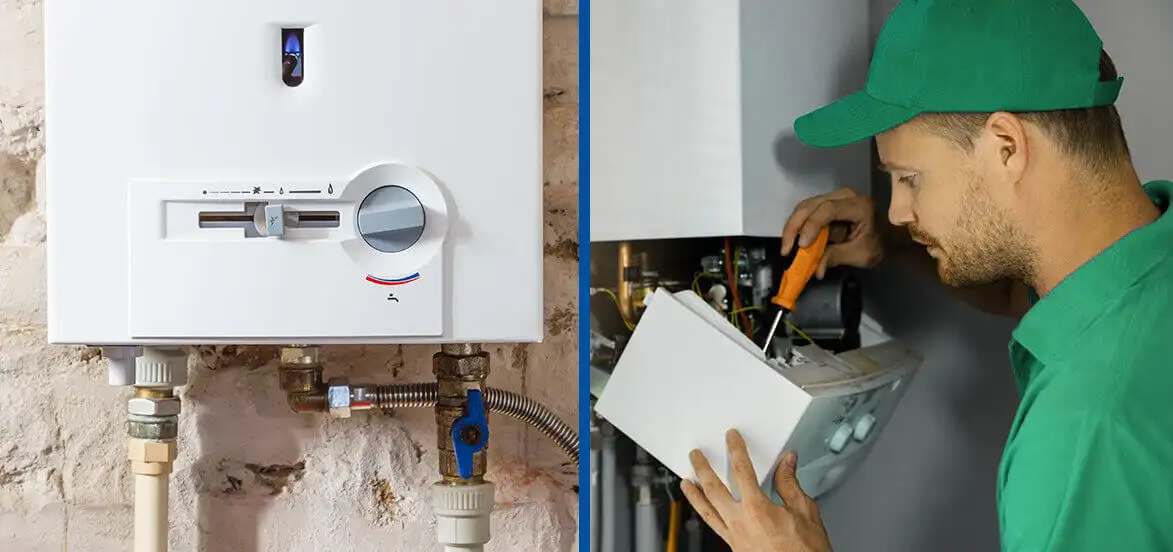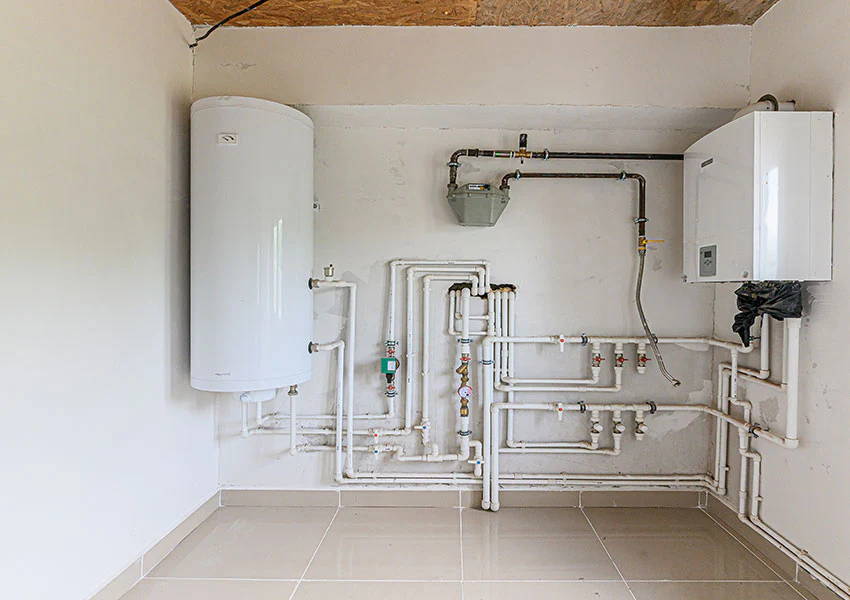How a Water Heater Works: A Simple Guide for Homeowners (2024)
When it comes to the comfort of your home, having hot water on demand is a must. Whether you’re taking a shower, washing dishes, or doing laundry, you rely on your water heater to keep things running smoothly. But how does it actually work? Let’s break it down into simple terms.
The Basics: How Water Heaters Work
A water heater’s primary job is to heat water and deliver it to your faucets and appliances. It does this through one of two main methods: storing hot water in a tank or heating it on demand.
Tank Water Heaters
Tank water heaters are the most common type found in homes. These units have a large storage tank, usually ranging from 20 to 80 gallons. Here’s how they work:
- Cold Water Inlet: Cold water enters the tank through a pipe at the top.
- Heating Mechanism: The water is heated by either a gas burner or an electric heating element located at the bottom of the tank.
- Thermostat Control: A thermostat monitors the water temperature and turns the heating element or burner on and off to maintain the desired heat level.
- Hot Water Outlet: When you turn on a hot water tap, the hot water is drawn from the top of the tank, and more cold water enters at the bottom to replace it.
This cycle continues, ensuring you always have hot water ready.
How Does a Tankless Water Heater Work?
Tankless water heaters, often called on-demand water heaters, take a different approach to providing hot water compared to traditional tank-style units. Instead of storing and heating a large volume of water in advance, they heat water instantaneously as it’s needed.
Here’s a breakdown of the process:
- Cold Water Activation: The process begins when you open a hot water tap somewhere in your home. This action triggers a flow sensor inside the tankless unit, signaling that hot water is required.
- Heat Exchanger: Cold water enters the unit and flows through a heat exchanger, which is a series of coiled pipes or plates.
- Heating Mechanism: Depending on the type of tankless heater, the water is rapidly heated within the heat exchanger by either:
- Gas Burner: In gas models, a powerful gas burner ignites and heats the heat exchanger, transferring thermal energy to the flowing water.
- Electric Heating Element: In electric models, high-powered electric heating elements heat up the heat exchanger, raising the water temperature as it passes through.
- Hot Water Output: The heated water is then delivered directly to the tap or appliance that requested it. This eliminates the wait time associated with traditional tank heaters, where you might have to wait for the stored water to reheat.
- Continuous Flow: As long as the hot water tap remains open, the tankless unit continues to heat water on demand, providing a continuous stream of hot water.
Key Advantages of Tankless Water Heaters
- Energy Efficiency: Tankless water heaters are generally more energy-efficient than tank models because they only heat water when it’s needed, eliminating standby heat loss.
- Space-Saving: They are compact and wall-mounted, freeing up valuable floor space.
- Endless Hot Water: They can provide a continuous flow of hot water, ideal for larger households or those with high hot water demands.
- Longer Lifespan: Tankless units typically have a longer lifespan than tank-style water heaters.
Tankless water heaters are more energy-efficient because they don’t have to keep a large tank of water hot all the time.
Recommended reading: What Steps Should Be Taken To Install A Tankless Water Heater Correctly?
What You Will Find Inside Your Water Heater
Inside a water heater, you’ll discover a network of essential components working together to deliver hot water to your taps. In tank-style heaters, a large insulated container stores and heats water, while tankless models utilize a powerful heat exchanger to warm water on demand. Both types employ thermostats, valves, and safety features to ensure efficient and safe operation.
Tank Water Heater Components:
- Anode Rod: A sacrificial metal rod that attracts corrosive elements in the water, protecting the tank itself from rust and corrosion. It needs to be periodically inspected and replaced.
- Dip Tube: A plastic pipe that directs incoming cold water to the bottom of the tank, ensuring that the coldest water is heated first.
- Heating Element or Gas Burner: The primary heat source. In electric models, heating elements convert electricity into heat. In gas models, a burner utilizes a gas flame to heat the water.
- Thermostat: Regulates the water temperature by controlling the heating element or burner. It ensures the water is heated to the desired temperature and prevents overheating.
- Pressure Relief Valve: A safety device that opens to release excess pressure if it builds up within the tank, preventing potential explosions.
Tankless Water Heater Components:
- Heat Exchanger: A coiled pipe or series of plates where water is rapidly heated as it flows through the unit. This allows tankless heaters to provide hot water on demand without the need for storage.
- Flow Sensor: A sensor that detects water flow and triggers the heating process when a hot water tap is opened.
- Burner or Heating Element: The heat source for the water. Gas models use a burner, while electric models rely on heating elements.
- Ventilation System (for gas models): Crucial for safely venting exhaust gases produced during the combustion process to the outside of the home.
Recommended reading: Pros and cons of tankless water heater
Gas vs. Electric Water Heaters
Water heaters, essential for everyday comfort and convenience, come in two primary types: gas and electric. Understanding the mechanics and pros and cons of each can help you make an informed decision that best suits your household’s needs and budget. Let’s delve into the specifics of each type and explore their key differences.
Gas Water Heaters
Gas water heaters use a burner at the bottom of the tank to heat water directly. Hot exhaust gases then rise through a central flue, further heating the water before being vented outside
- Gas Burner: The gas burner, fueled by either natural gas or propane, ignites to create a flame that directly heats the water at the bottom of the tank. This flame heats the water through a process called convection, where the heated water rises and cooler water sinks, creating a continuous circulation that helps to distribute the heat throughout the tank.
- Exhaust Flue: As the hot combustion gases generated by the burner rise, they pass through a central flue pipe that runs vertically through the water tank. This flue acts as a secondary heat exchanger, efficiently transferring additional thermal energy from the exhaust gasses to the surrounding water before the gases are safely vented out of the home. This helps to maximize the efficiency of the gas water heater by capturing and utilizing more of the heat generated by the combustion process.
- Thermocouple: A thermocouple, a crucial safety feature in gas water heaters, acts as a flame sensor. It generates a small electrical current when heated by the burner flame. This current is used to keep the gas valve open. If the flame goes out for any reason, the thermocouple cools down and stops generating the current, causing the gas valve to close automatically. This safety mechanism prevents the buildup of unburned gas, which could lead to a dangerous situation.
Gas water heaters typically heat water faster than electric models, making them a popular choice for larger households.
Electric Water Heaters
Electric water heaters utilize heating elements immersed in the water to raise its temperature. A thermostat regulates these elements, ensuring the desired water temperature is maintained, while insulation helps conserve heat within the tank. Here’s how they operate:
- Heating Elements: These are usually located at the bottom and sometimes the middle of the tank. They heat up when electricity flows through them, transferring heat directly to the surrounding water. The number and placement of heating elements can vary depending on the size and model of the water heater.
- Thermostat: Similar to gas models, a thermostat controls the heating elements, ensuring the water stays at the desired temperature. It acts as a switch, turning the elements on and off as needed to maintain the set temperature. This prevents the water from overheating and helps conserve energy.
- Insulation: The tank is insulated to help keep the water hot and reduce the amount of electricity needed to maintain the temperature. This insulation minimizes heat loss to the surrounding environment, improving the overall efficiency of the water heater. Common insulation materials include fiberglass, foam, and mineral wool.
Electric water heaters are generally easier to install and maintain, but they might take longer to heat water compared to gas models.
Similarities and Differences
Now that you know the basics, let’s compare the different types of water heaters:
Similarities:
- Purpose: All water heaters are designed to provide hot water for your home.
- Thermostat Control: Both gas and electric models use a thermostat to regulate water temperature.
- Installation: Both types can be installed indoors, though gas models require proper ventilation.
Differences:
- Heating Method: Gas models use a burner and flue system, while electric models use heating elements.
- Efficiency: Tankless models are generally more energy-efficient than tank models because they heat water on demand.
- Space: Tankless water heaters are more compact since they don’t require a storage tank.
If you need help choosing, installing, or maintaining your water heater, All Star Plumbing is here to assist. We offer expert advice and reliable service to keep your home comfortable year-round. Contact us today to learn more about how we can help with all your plumbing needs!
FAQ
1. How does a water heater system work?
A water heater works by taking in cold water from your home’s supply, heating it using either a gas burner or electric heating elements, and then storing the heated water in a tank until it’s needed. When you turn on a hot water tap, the heated water is drawn from the top of the tank and new cold water enters the bottom, ready to be heated again.
2. How long does it take for a water heater to heat the water?
The time it takes for a water heater to heat water depends on the type and size of the heater, as well as the initial temperature of the water. Typically, a gas water heater can heat a full tank of water in about 30 to 40 minutes, while an electric heater may take about an hour or more.
3. How does a water heater run out of hot water?
A water heater runs out of hot water when the hot water stored in the tank is used up faster than it can be reheated. This can happen if multiple fixtures are using hot water simultaneously or if the tank is too small for the household’s needs. Once the hot water is depleted, the heater will need time to reheat the cold water entering the tank.
4. How does a water heater know when to turn on?
A water heater is equipped with a thermostat that monitors the temperature of the water inside the tank. When the water temperature drops below a set point, the thermostat signals the heating elements or gas burner to turn on and reheat the water. Once the water reaches the desired temperature, the heater will automatically turn off.
5. How long does a water heater last?
Tank water heaters typically last 8-12 years, while tankless models can last up to 20 years with proper maintenance.


